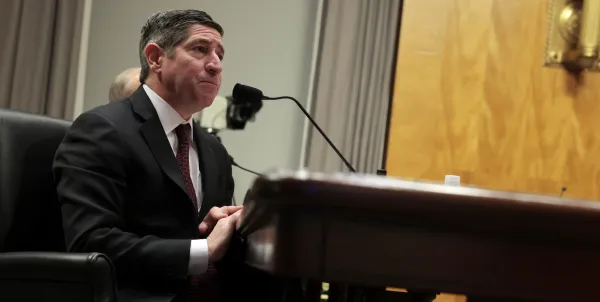The Office of Personnel Management released its final ruling on phased retirement Thursday, allowing federal employees with decades of service under their belts to work part time while accruing partial retirement benefits, almost identical to the plan’s draft introduced last summer. Eligible federal workers can begin applying for phased retirement in 90 days.
Signed into law by President Obama in 2012 and established by OPM last June, the phased retirement plan looks to achieve more efficient and effective knowledge transfer among experienced government veterans and younger workers. A requirement of the plan is that phased retirees must devote at least 20 percent of their time mentoring workers who will likely replace them when full retirement comes.
“The regulations are another way that our administration, the president’s administration, is giving agency leaders new tools to manage and plan for the 21st century workforce,” said OPM Director Katherine Archuleta in a press call. “They will let managers provide the kind of flexibility that will meet the needs of our employees while allowing us to tap into their experience, their wisdom and the judgement of the talented federal workforce.”
“They’ll continue to share knowledge and expertise with the next generation of federal leaders…that’s the key component of the phased retirement changes,” said Ken Zawodny, OPM’s associate director of retirement services.
According to the final ruling, employees who are eligible for the plan and approved by their agencies will “enter into a 50 percent working schedule and receive approximately 50 percent of what his or her annuity would have been (not including credit for sick leave), had the individual retired completely from Federal service, without electing a survivor annuity.” This plan, according to Zawodny, will mean more earnings for retirees.
“It also allows employees entering phased retirement to receive more income than he or she would have earned by simply changing to a part-time work schedule or by simply retiring fully,” he said. “Upon retirement the employee will be entitled to a greater annuity than if the employee had fully retired at the time of transition to phased retirement but less than if the employee had continued employment on a full-time basis.”
Hundreds of comments and more than a year later, OPM made few changes to the draft ruling in finalizing it. The main addition was a requirement that agencies establish written criteria to be used for approving or denying applicants for phased retirement, which is their discretion. Eligibility for phased retirement essentially mirrors the requirements outlined in the Civil Service Retirement System and the Federal Employment Retirement System, depending on which program workers fall under, Zawodny said.
The National Treasury Employees Union, a major advocate of phased retirement, said it will lobby agencies to enable widespread adoption of the plan. “From the beginning, NTEU has believed that the program should be broadly available and that remains our goal,” said NTEU President Colleen Kelley in a statement. “We will be talking to the agencies where NTEU represents employees about establishing a phased retirement program and all the details that surround it. We will also make use of labor-management forums and collective bargaining opportunities to bring the program to life.”
There is, of course, a possibility that high adoption of the plan may throw a hitch into the notoriously-slow (but improving) processing of federal retirements. Phased retirements would require annuities for those retirees to be computed twice — once at the beginning and once at the end. OPM isn’t sure yet what effect that might have on the load of retirement processing.
“The individual is eligible to retire anyway, so we would be processing it at least once. And that initial calculation will not be much different from the final computation. It’s a matter of just doing it twice, and depending on when it comes in, that’s going to be really the crux of it,” Zawodny said. He cautioned that a sudden influx of phased retirements in January, which is the peak season for retirements, on top of normal retirements could add to that workload. “Or conversely, that workload could be cut in half by phased retirement. We’re just not sure yet.”
Now as OPM releases its final ruling, it will also soon send out agency guidance for implementing the plan. Workers can begin applying for phased retirement beginning Nov. 2.






